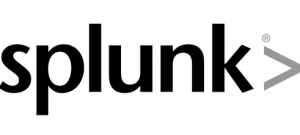Since its emergence as an analytics market leader, Splunk has been boldly going where few data companies have gone before. Whether it was the Silicon Valley company's stunning $1.6 billion valuation in 2012, its fast paced growth, or its splashy $1 billion acquisition of SignalFx – it’s always been a mission of upwards and onwards for the data-parsing platform provider.
Now, Splunk is planning to beat the odds once again with leadership pronouncing their belief that the San Francisco-based company can reach a billion dollars in operating cash flow by 2023. Its stock price rebounded 10 percent after management unveiled their grand 10-digit goal in November 2019 but now some are wondering whether if it’s anything more than a symbolic planting of the flag.
There's no doubt that Splunk is growing, and their augmented product offerings will help the data analytics provider with future expansion. In the second quarter, revenue growth at 33 percent exceeded analyst expectations – coming in at $517 million over the Street's forecasted $488 million. Splunk followed that up with robust third-quarter growth of 30 percent year-over-year to $626 million – once again surpassing predictions of a $600 million gain.
Of Splunk’s growth, Constellation Research analyst Holger Mueller believes the data firm is “on a roll” with both its revenue growth and depth of its product offerings. “It’s good to 40 percent growth, but more important are the new capabilities Splunk is adding to its product set, both from an organic growth and acquisition perspective,” Mueller said. “When vendors expand their function depth and breadth as Splunk is doing right now, executives tend to pay attention, and they're increasingly looking at Splunk to power their next-generation applications."
The future looks bright when looking at Splunk’s fourth-quarter forecast, showing an estimated 26 percent increase with a consensus estimate of $783 million. At the same time, Splunk's management has projected a more conservative $780 million. It's noteworthy that the data intelligence firm regularly exceeds its expectations in this way.
On the other side, Splunk is burning through cash faster than it makes it right now. Leadership has stated the company is likely to operate with a negative cash flow balance of approximately $300 million for this fiscal year – a $650 million reversal from six months earlier. This negative number breaks with the data firm's history of positive operating cash flow, but management is asking stakeholders to not fret about Splunk running in the red. Even still, it took three months for leadership to convince their investor-littles that the sky isn’t falling.
There is a reason why Splunk is confident about running a $300 million deficit. The data firm recently announced they were transitioning from a perpetual software licensing solution to a subscription-based service. While the SaaS model is a better choice for the analytics provider, the changeover will likely contribute some chaos in the company’s top line until the new streams of revenue can smooth out the rough spots.
Even with some of the challenges facing the company, analysts agree that reaching a billion in operating cash flow is reasonable. Splunk’s stock is considered relatively expensive by most measures – it trades at 65 times its next year's earnings forecasts and more than ten times sales. On the other hand, the market is bestowing a valuation sitting at 23 times it's $1 billion cash flow mark.
Premium
























